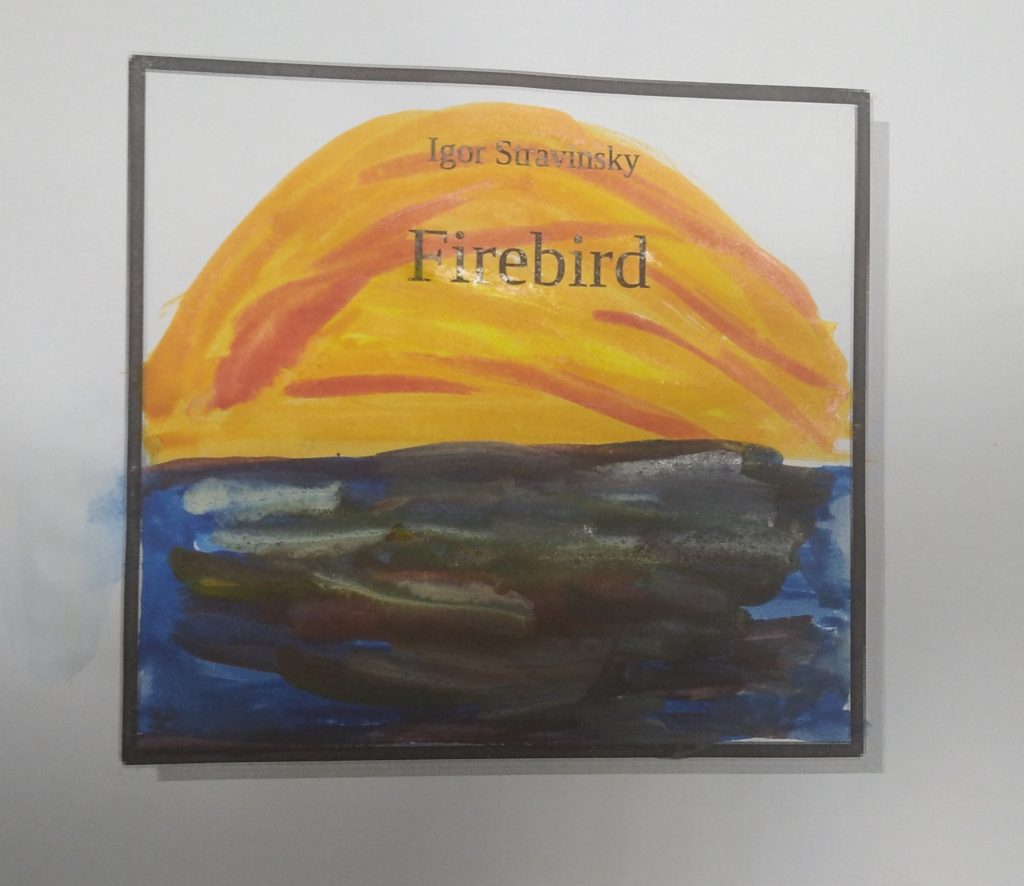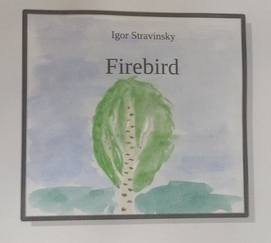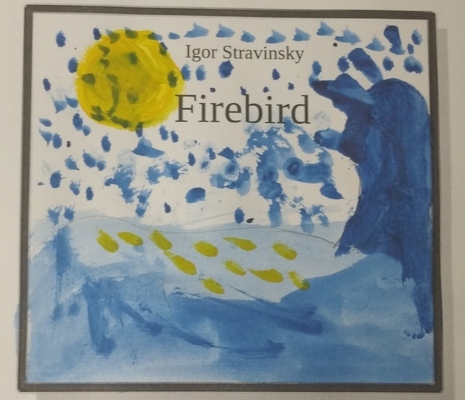
There are many roads that lead to Rome which here will be a synonym of a good lesson. Sometimes it is boredom, when the teacher cannot even bear to look at the coursebook and the official educational materials. Sometimes it is the students, when they bring their world with them, when they learn quickly or, why not, when they don’t behave in the way that we would dream of. Sometimes, it is a random resource, a storybook or craft materials, that you really (really!) want to use.
Sometimes, however, you also find yourself in the middle of a film, Off the Record, a documentary on Laurent Garnier, the DJ, and you gasp because you find out how among all the other things cool that he has done and does, he also takes part in music lessons in a small school, somewhere in a French village, and there, with teens, he explores the meaning of different music styles, he gives them a chance to experience different kinds of music and he guides them into translating these impressions into visual art…
I gasped because I could not decide which reaction I should go for first. Shout out loud ‘Laurent, I love you!’ (just because he finds time to do something for his community and because of all things, he chooses to teach)? Shout out ‘Laurent, me, too! We do it, too!’ (because we entertain ourselves with my students with a similar exercise, albeit on a much smaller scale, when we play the Musical Challenge)? Or shout out ‘Pause the movie, for a moment, for heavens’ sake! I am being flooded with ideas and I need time to take notes!’ Because the Musical Challenge I have put together, good as it was as a warmer or a speaking activity, turned out to have a lot more potential and it be a brand new direction and at the same time an opportunity to combine teaching English through Art that I have been toying with for years now, craft and project work that, I was sure, could help me generate lots and lots of English. What’s not to like?
Crumbs # 19: Teaching English Through Music: Igor Stravinsky
The notes below constitute the outline of a 45-minute lesson I taught during the summer to my primary students aged 8 – 9, of a strong A1 / YLE Movers level whose speaking and listening skills are closer to A2 / YLE Flyers. I had only two students on the day so we did all of the activities whole class.
Revision
- A revision game: adjectives – opposites, with the wordwall cards and then a miming game (one of the students choosing the word to mime for the other kids to guess). Another option are the present tenses or the verbs that the kids might need for storytelling.

Russian fairytales
- Illustrations of the four traditional stories : About the Fisherman and the Goldfish, the Three Pigs, The Hen Ryaba and The Firebird
- Kids turn turns to retell the stories. There is no pre-teaching of any vocabulary, the teacher feeds in the words on the go.
- Kids choose their favourite story and talk about their favourite Russian story
Listening number 1
- Teacher shows the photograph of Igor Stravinsky, introduces him briefly
- Teacher tells the students that he wrote music for one of the four stories
- Teacher plays a short piece of the Firebird (for example 38’40 – 40′) and asks the students to guess which of the stories the music could illustrate
- Feedback, teacher tells them that the music they heard is called ‘Firebird’ and that it is one of the most popular pieces of modern music.

Listening number 2 / Art
- Teacher gives out the template and tells the students that it is a cover of a record / CD with Firebird and that they they are going to design the cover and the illustration.
- Teacher says that they are going to listen to another piece of music and draw what they hear. Teacher tells them that perhaps it will be for people who don’t know the story of the firebird, who don’t know Russian fairytales at all and that we need to help them understand what kind of music they might hear.
- ‘All ideas are good ideas’ is the motto of all of our creative projects, it is good to bring that up again.
- Teacher puts the drawing materials and ideally there would be a choice of pencils, markers, crayons, finger paints, watercolours etc. Each student can choose their own.
- Teacher plays the final piece of the Firebird (40′ – 46′) and the students are creating their piece. The length of the listening can be extended, either a longer piece can be chosen or the another excerpt can be added, depending on the group and their involvement.
- If possible, the kids can be involved in discussing what the music might be illustrating. The Firebird is very energetic and varied, there is a lot of potential for that.
- If there is time, kids can prepare two covers, based on two different excerpts from the suite.
Presentation
- Kids take turn to present their album covers. They can use the following questions as framework: What is there in your picture? Why? Do you like the music? Why? What are you thinking about when you are listening to it? Kids can either ask each other these questions or use them to prepare a discourse.
- All the album covers are displayed on the walls. If there is time, the group can listen to the chosen excerpt again.
- Feedback and error correction.

How it went and what I learnt
- In short: we loved it.
- The kids produced a lot of language throughout the lesson (the teacher is happy).
- The kids loved the fact that they could talk about the stories they knew and that they could paint (something that we rarely do). They seemed to enjoy listening to the music, too.
- Observing how their ideas are born and shaped was a fascinating experience for the teacher, too. The first impulse was to draw a bird made of fire but, as they listened on, the other, better, more individual and special things began to appear. And they kept working on them, as the music led them.
- Afterwards, they talked a lot about their pictures and the creative process. Normally, I ask if I can take the final product, if it is ok to photograph it or to put it on display. This time they were the ones to ask whether I was going to put them up on the noticeboard. It was a lovely moment.
- The thing that surprised me most and that was the biggest challenge (or ‘challenge’) was the same thing that made the activity meaningful, motivating and generative, namely the fact that we used the Russian traditional stories as the basis. First of all, they had a lot to say about them and cutting corners (aka a short summary of the story) was out of the question. They wanted to tell me everything (as in: every little detail, significant or not). Second of all, because they were retelling the stories as they knew them, in Russian, they were very reluctant to give up on the beautiful, literary language for which they are not ready yet, in English and looking for those higher-shelf equivalents did get in the way and it did slow them down. Sometimes they were so unwilling to abandon the beauty that they used Russian. It was touching and it was beautiful and I still have not decided what I can do about it and how I can overcome this ‘problem‘ in the future. Because, of course, I want more!
- What you can see in the pictures is a beautiful birch tree Daria and a tsunami, to which a sunrise was added, as an afterthought, a few notes later belongs to Antonina. Mine is the sunset which, lame as it is, I am quite happy with because only now did I make a connection between the firebird and the sun. Let it be.
Happy teaching!
P.S. Why Stravinsky? Apart from the fact that “Firebird’ is one of my favourite music pieces ever, it happened so that a few months ago, I used him as a reference with my young teens and their brains just went blank. They had never heard of him. Naturally, I decided to fix that. I rather like the idea that in about twenty years from now, my kids will hear the name Stravinsky in the conversation and their first association will be ‘Yes, we had this lesson once with our English teacher, Anka…’
Malevich and his Black Square are next in line, for the same reason.
So, Teaching English through Music anyone?
1 thought on “English, kids and Igor Stravinsky”